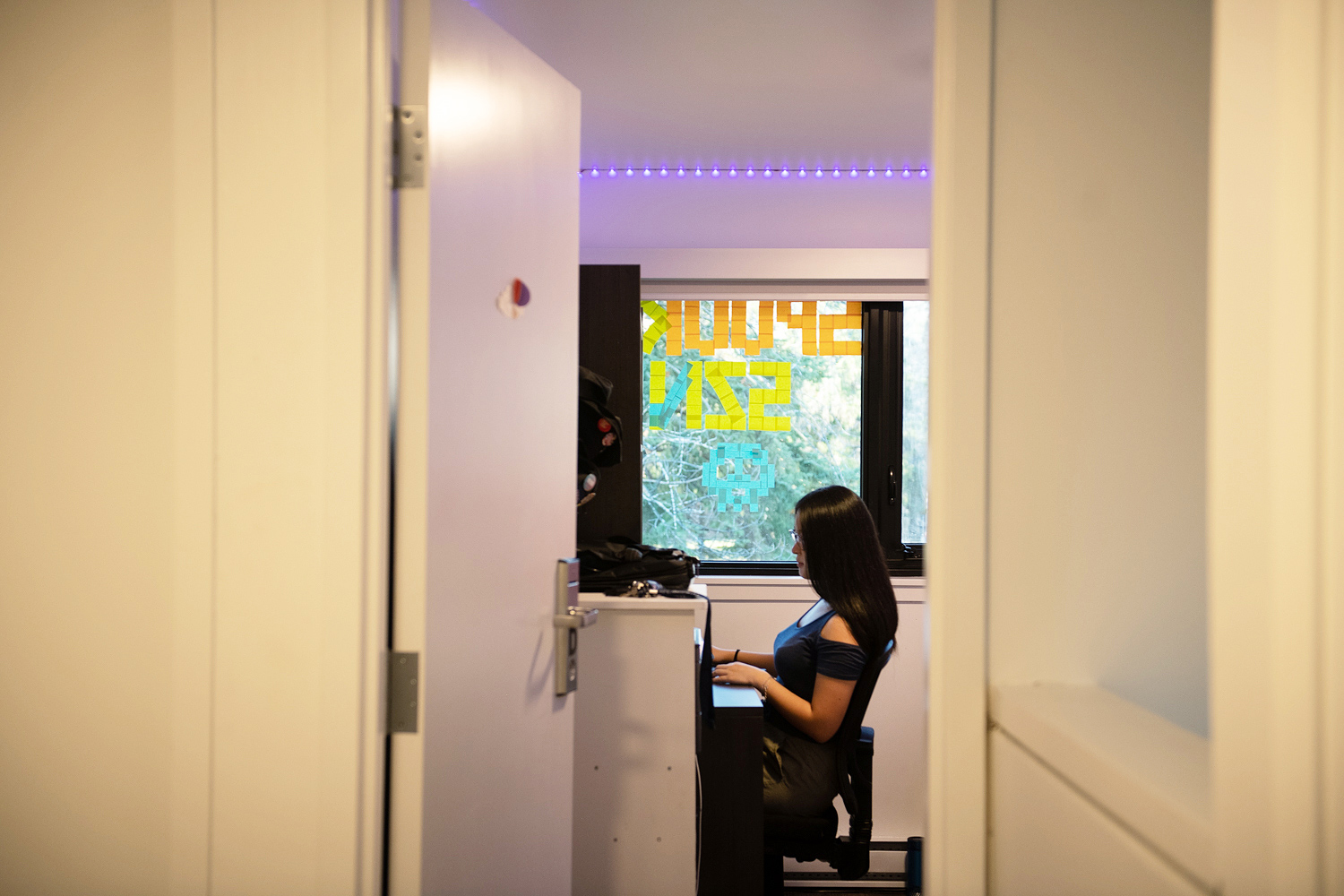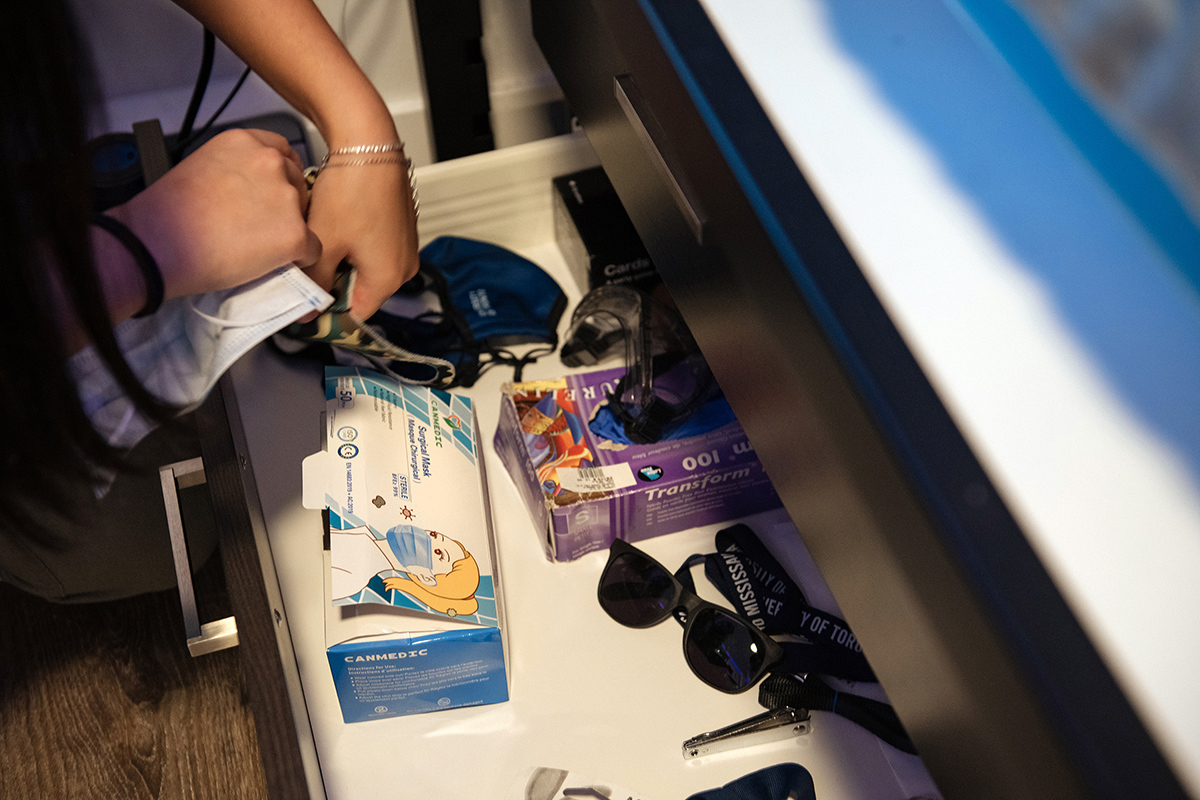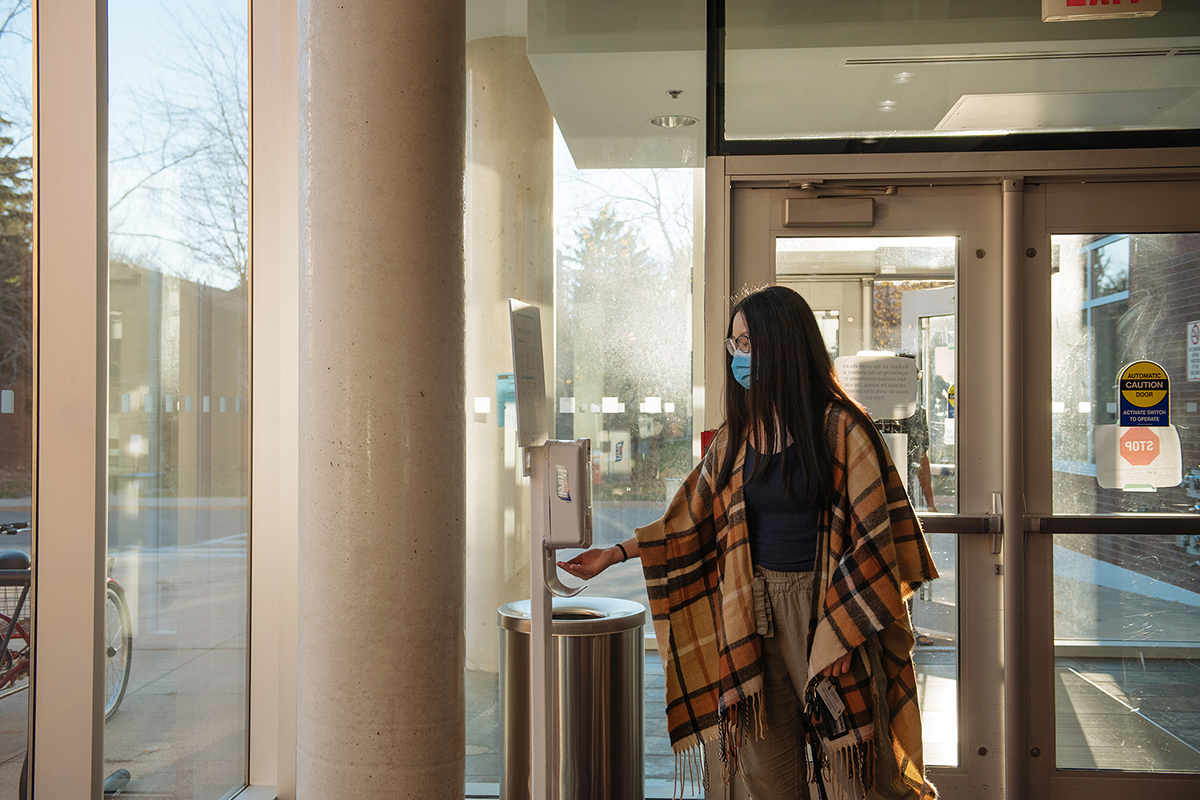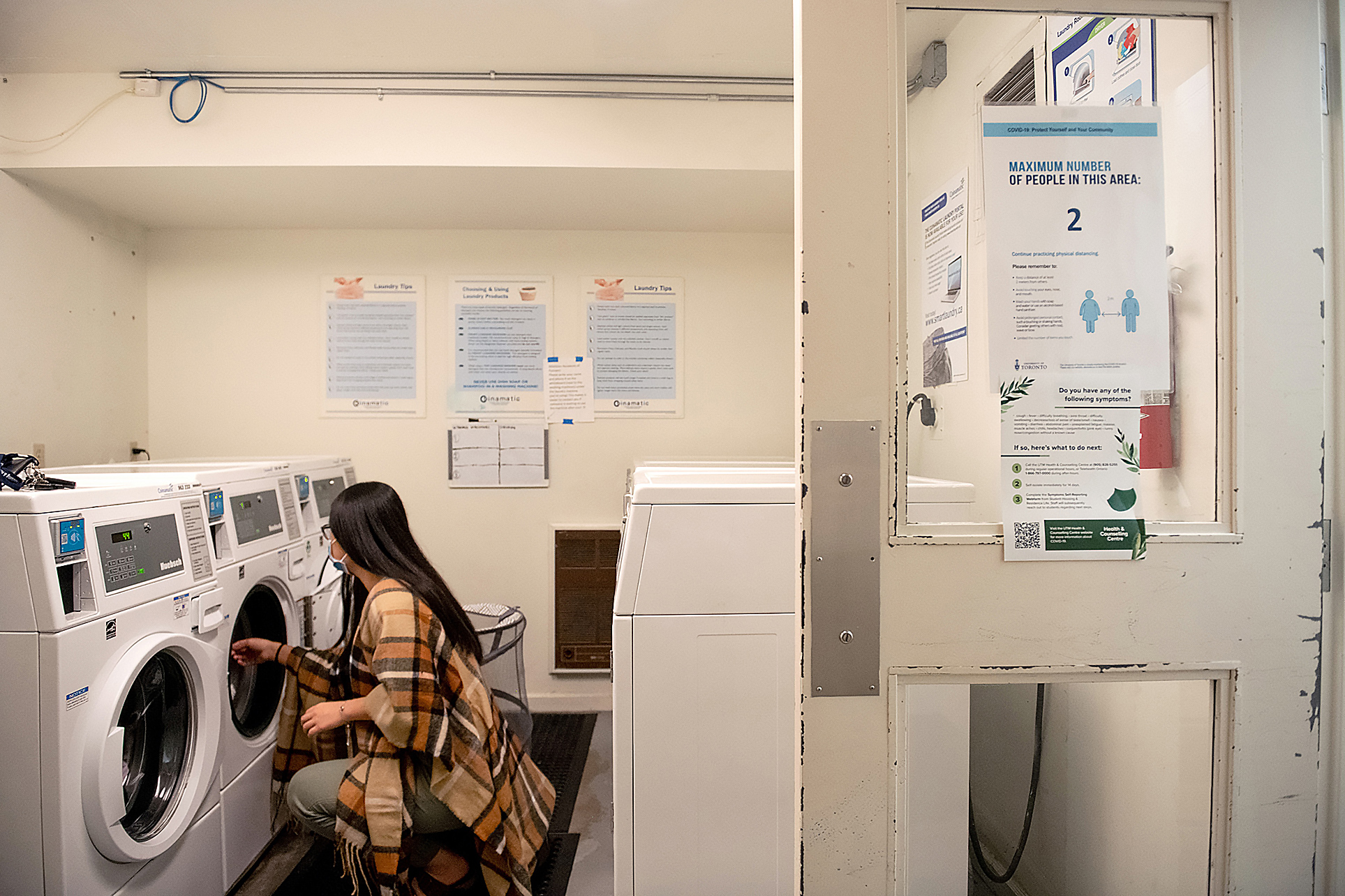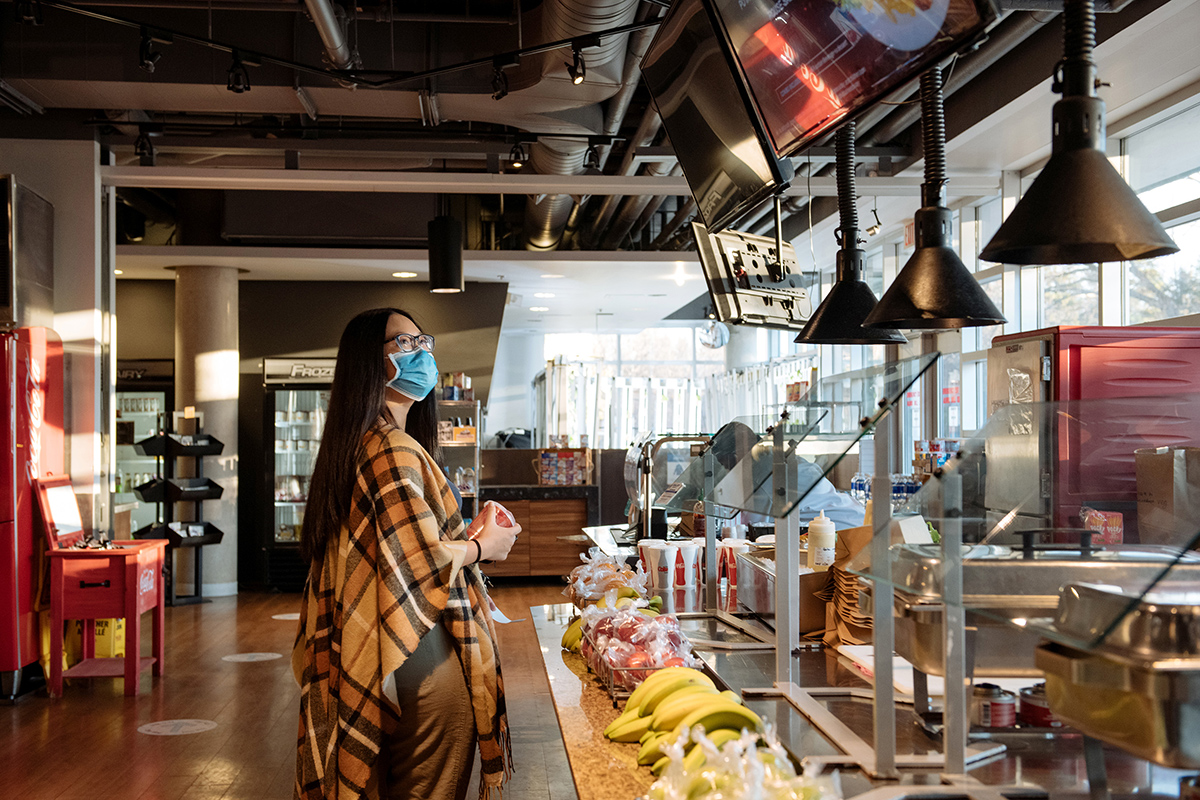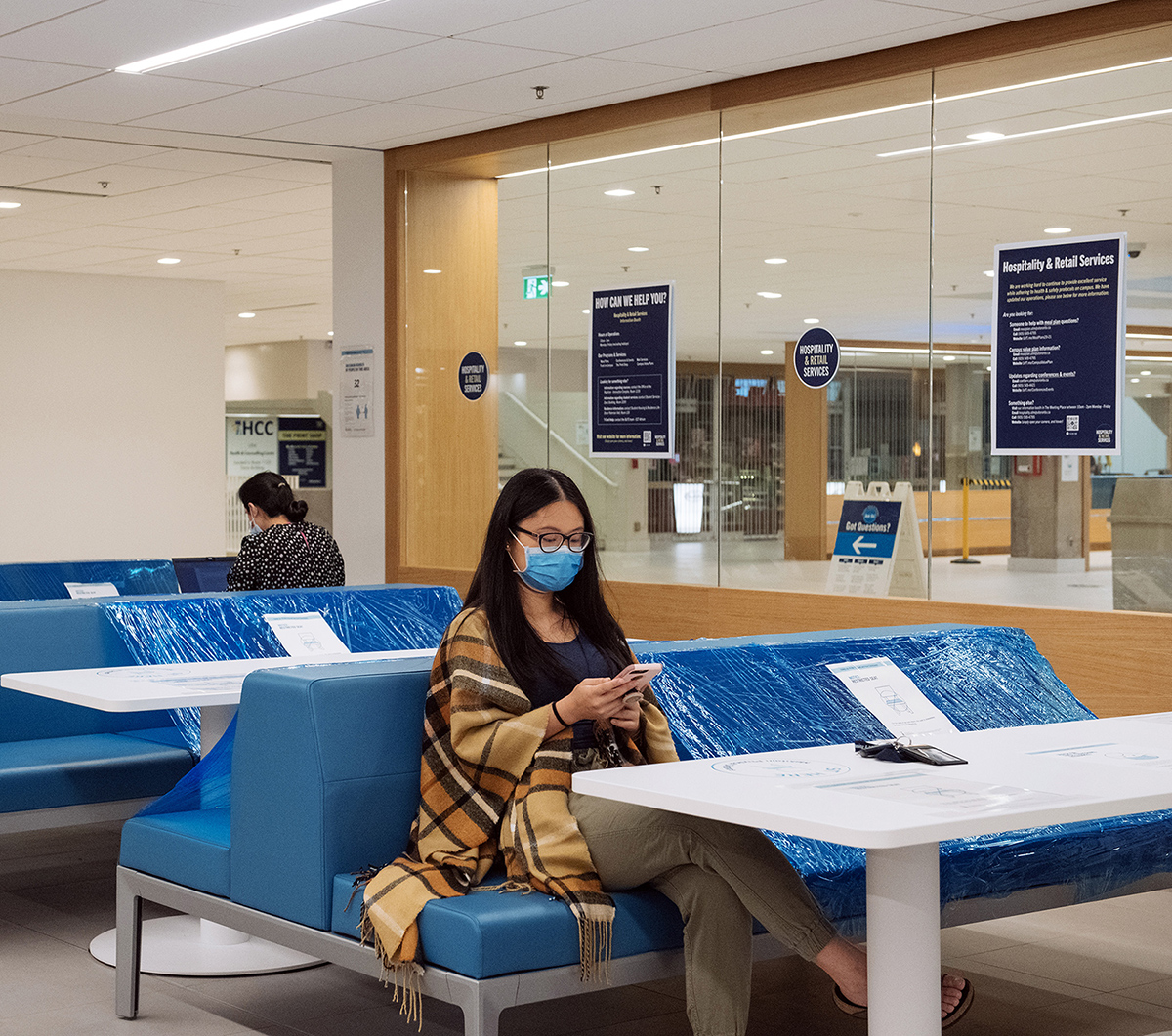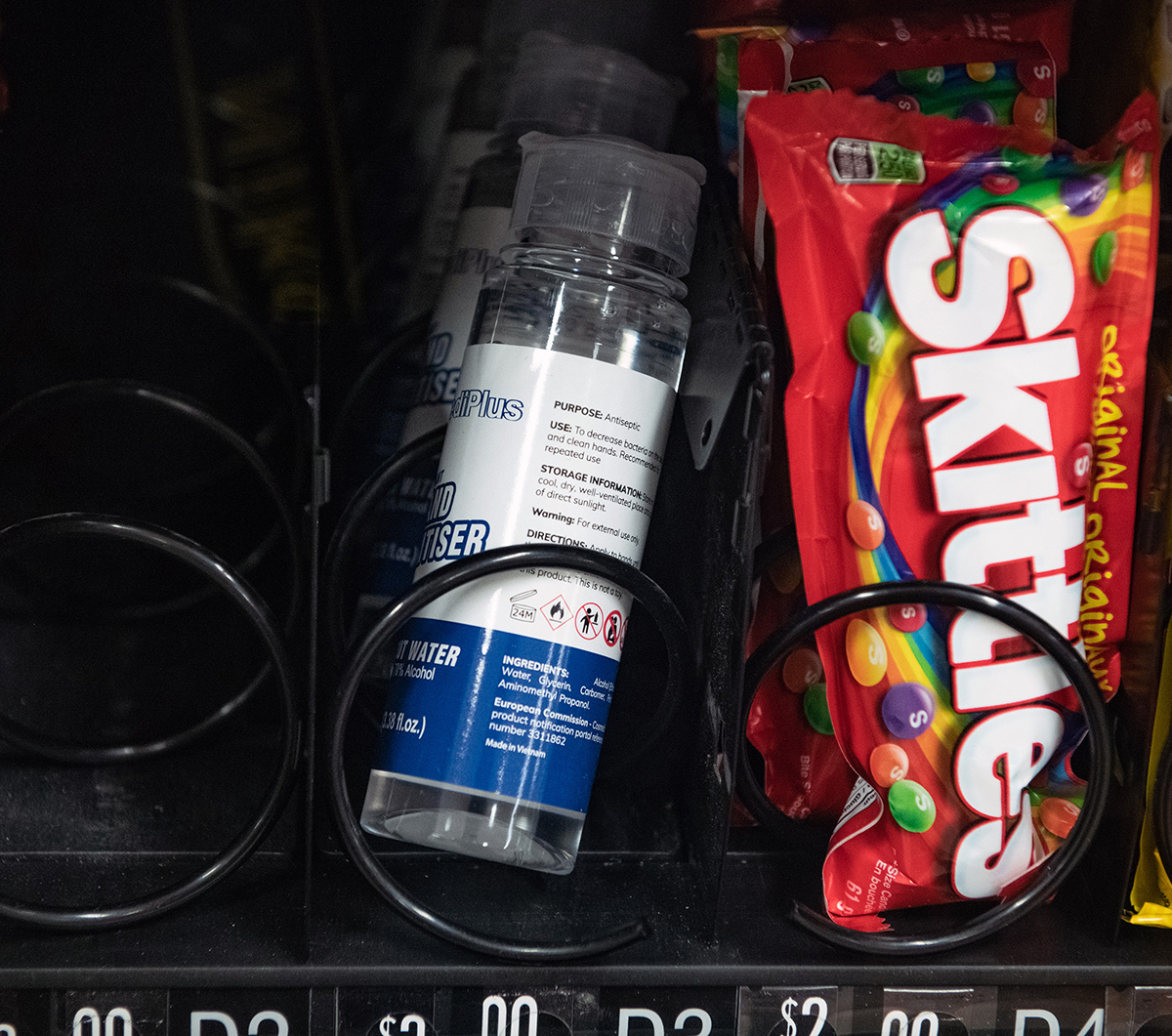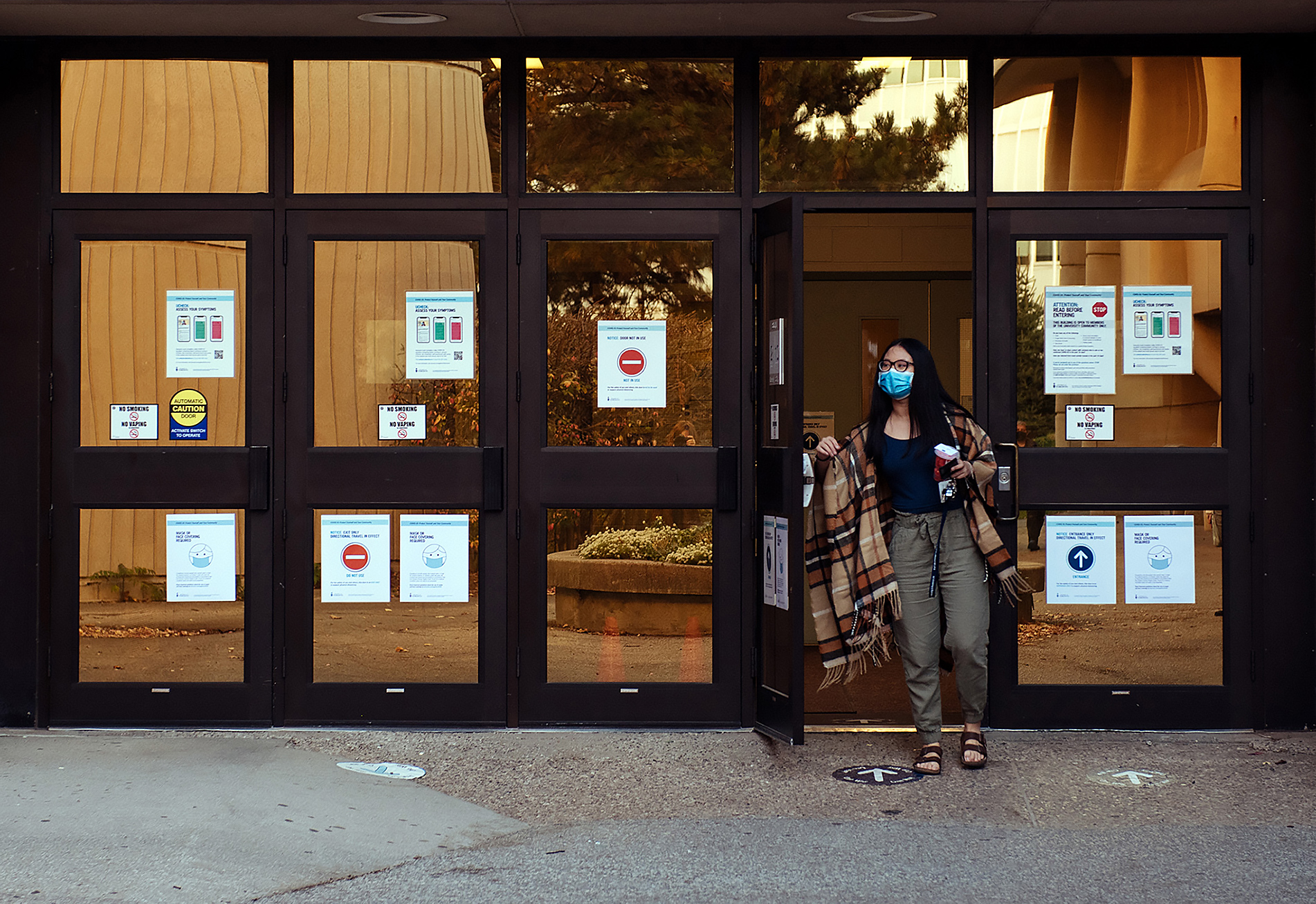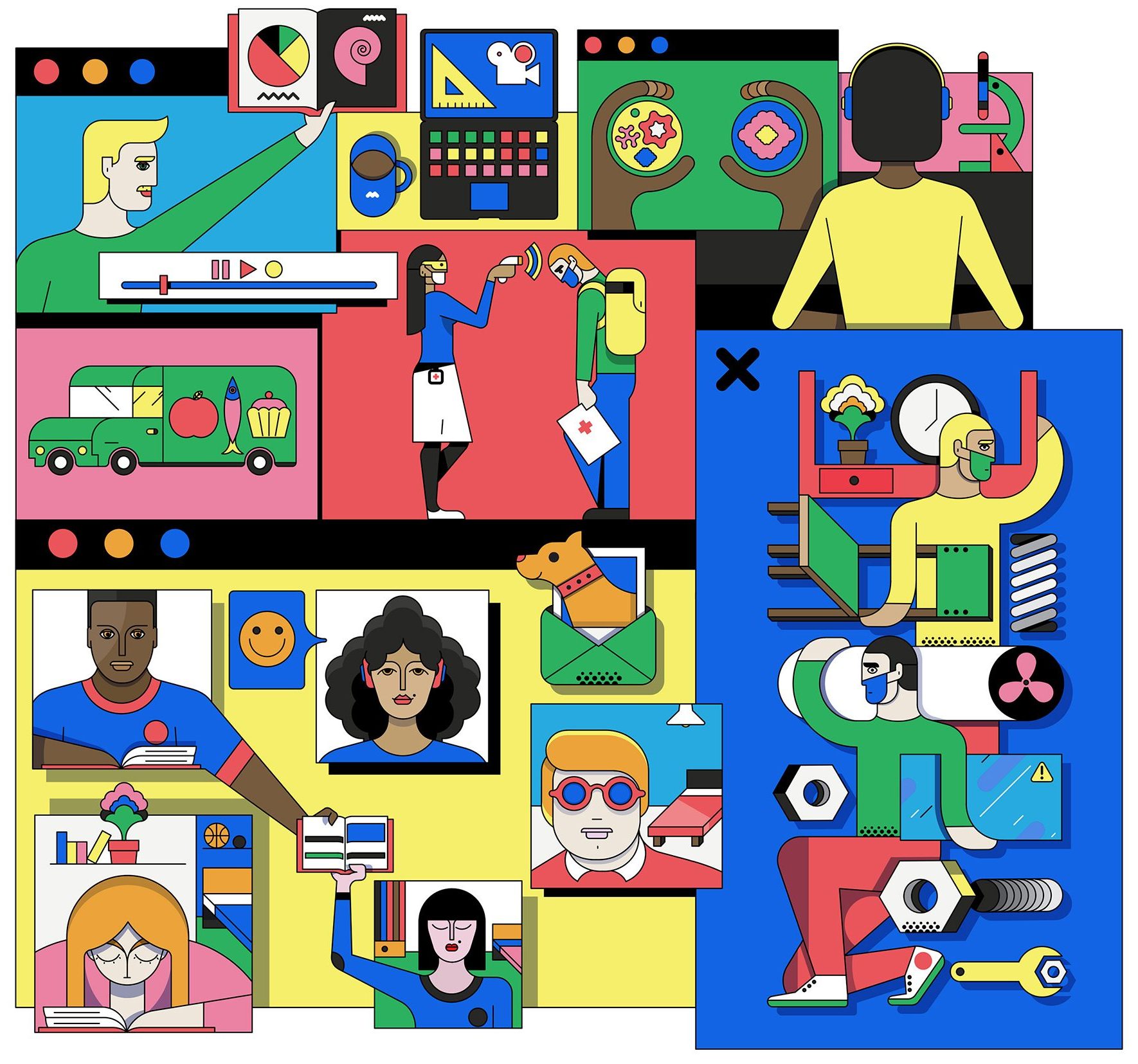Shirley Liu got her lab work done in half the time this fall compared with last year. The second-year biology student at U of T Mississauga had no travel time and minimal prep because she worked from her residence room, moving an avatar around a virtual laboratory.
“You log in and get started – clicking on the pipettes, transferring solutions to beakers, and so on,” says Liu. “It’s really efficient.” Shifting from in-person labs to simulations was just one of the many pandemic-driven changes she experienced since starting classes in September. And she’s not alone: 90 per cent of undergraduate students took all of their courses online this past fall.
When the lockdown forced teaching to go digital in March, U of T had about 150 fully online courses. “Within a few days, that number went to more than 6,000,” says Susan McCahan, the vice-provost of academic programs and of innovations in undergraduate education. She jokes that when she started in her innovations role back in 2015 she never imagined having to help transform undergraduate education for 70,000 students across three campuses almost overnight. It was a massive undertaking, made even more challenging by the fact that there was so little time to prepare. For many professors, those spring weeks were their first forays into fully virtual teaching.
“Everyone did their best, but we knew we wanted to do better in the fall,” says McCahan. Led by the dual priorities of maintaining academic excellence and ensuring the health and safety of its community members – wherever they are – the university used the summer to get faculty members up to speed on online teaching. This included investing in new technology, such as an institution-wide license for Zoom, hiring more educational technologists – there are now more than 100 – and offering workshops and one-on-one consultations for instructors on designing and teaching virtual courses. “We set up a global calendar of all the online teaching resources available across the university and revised it daily,” says McCahan.
“Zoom by the Lake,” a sort of summer boot camp for online course design run through U of T Mississauga’s Teaching and Learning Collaboration, was just one of those resources. Fiona Rawle, the associate dean of undergraduate education at U of T Mississauga who helped lead the camp, says she was also learning alongside the attendees. “I was doing a lot of reading on online teaching, as were many of my colleagues. We all shared information and provided feedback on each other’s course plans.” Mairi Cowan, an associate professor, teaching stream, in the department of historical studies at U of T Mississauga, was one of the “campers.” She says the program gave faculty a good sense of what it’s like to take an online course. “I came out with a deeper level of compassion for students, who are also brand new to all this,” she says.
The small fraction of undergraduate teaching that had an in-person component this past fall was mostly in courses that required hands-on learning, says McCahan. To ensure the physical infrastructure on the three campuses met or exceeded public health and safety guidelines, 800 U of T staff deemed essential workers spent the summer upgrading ventilation, installing Plexiglas barriers, adding signage and removing furniture to allow for physical distancing in all learning spaces. “Regulations were constantly changing and there was no blueprint for us to follow,” says Ron Saporta, chief operating officer for property services and sustainability at St. George. “We just tackled one building at a time across the 211 we have.”
In residences, an additional safety measure was making every room a single. Hamza Bin Waheed, a second-year commerce student from Pakistan and the president of the U of T Mississauga Residence Council, says he wanted to return to residence even though all his classes were virtual. “I was hoping to get as much out of the student experience as I could.” For all international students who, like Waheed, had to quarantine upon arrival in Canada, the university provided a private room with a washroom at a hotel or U of T Mississauga residence, as well as meal delivery and daily check-ins for health and well-being. By October, nearly 900 international students had completed their quarantine. “We did everything we could to make their transition as safe and comfortable as possible,” says Sandy Welsh, vice-provost for students.
With the vast majority of students staying at home or in residence and relying on technology to connect to their professors and classmates, there were inevitable challenges, but also some perks. “I’m saving so much time not having to go out to class and am finding it easier to access virtual office hours,” says Liu. “Of course, sometimes my profs have technical difficulties, like blurry screens or bad audio, but they fix them quickly. The downside is trying not to zone out when I’m staring at a screen for hours.”

Waheed says he also struggles with Zoom fatigue. “It sucks the energy out of me, especially combined with the information overload coming at students these days. Every single communication is virtual.” But he also sees some advantages. “It’s great when professors pre-record their lectures because I can watch when it’s convenient and take notes at my own pace.” He empathizes with his fellow international students who stayed in their home countries and are dealing with poor internet service and different time zones. “I mentor a student from Kazakhstan who has extremely slow internet and is 10 hours ahead,” he says. “Imagine how frustrating that would be.”
These access and equity issues add a layer of complexity for professors, says McCahan. Many try to hold live lectures in the morning to avoid middle-of-the-night viewing for the students in time zones that are up to 12 hours ahead. There is also the fact that YouTube and Google are banned in China, so students can’t view course videos on these platforms. To solve this problem and offer students some consistency, U of T recommends that instructors use one of three platforms: Zoom, Microsoft Teams and Quercus, U of T’s online teaching and learning system. For local students who lack adequate technology, internet service or a quiet environment, libraries and study spaces with Wi-Fi are open across all three campuses.
“We’re struggling through, and there isn’t always a perfect solution,” says McCahan. “There hasn’t been a mass market to drive the development of educational technology until now, and it’s not where we’d like it to be for 2020. The result is that it can feel a bit like you’re trying to stitch together pieces of technology to create what should be a seamless environment for your students, and it doesn’t always come across this way. Our move to online education is a work in progress. We’re constantly refining our approach based on student and faculty input.”
It’s great when professors pre-record their lectures because I can watch when it’s convenient and take notes at my own pace”
Rawle, who taught first-year biology to almost 900 students this fall, is always looking for ways to use the available technology to simplify the experience for her students. She used captions during her lectures, for example, and has a streamlined course home page with only nine icons linking to readings, a weekly to-do list and other essentials. “Students are inundated with information,” she says, “so I make things as straightforward as possible.”
Like many professors, Mairi Cowan has opted for a balance of live and recorded teaching in her large first-year history course. “I pre-record my weekly lecture as four or five short parts interspersed with activities, such as watching a video or exploring a related website,” she says. “Then we get together online later in the week so students can ask questions and discuss the material, as we would in person.” For her small, upper-year seminar class, she tries to reproduce the in-class experience. “It’s hard to replicate the alchemy of being together,” she says. “I realized there’s an art to looking around at students and gauging when they have something to say. I can’t do that online, so I’ve created different ways for them to contribute, such as chatting with me privately, taking part in polls, sharing written comments, or using video or audio.”
Rawle says feeling engaged and part of a community helps students learn better in any discipline. “This is something we’re all wrestling with right now: how do we build relationships when everyone’s on their screens? How do we humanize online education?” To start the fall term on the right foot, she sent a letter to her students before classes began expressing her concern for their health and well-being and acknowledging the stress of the current environment. Then, on the first day, she asked them what their top worries were and shared the most common responses anonymously with the whole class.
“I’m using a mix of inclusive and trauma-aware teaching practices, or more broadly a pedagogy of kindness,” she says. “I try to create an honest dialogue online. A lot of students message me privately, too, even if it’s just to ask for photos of my dog, Argus, who they can often hear in the background!” There’s no shortage of lighthearted moments in her class, whether that’s warming up for the lecture with a group colouring page, polling students on their “secret superpowers” or ending every class with music by request.
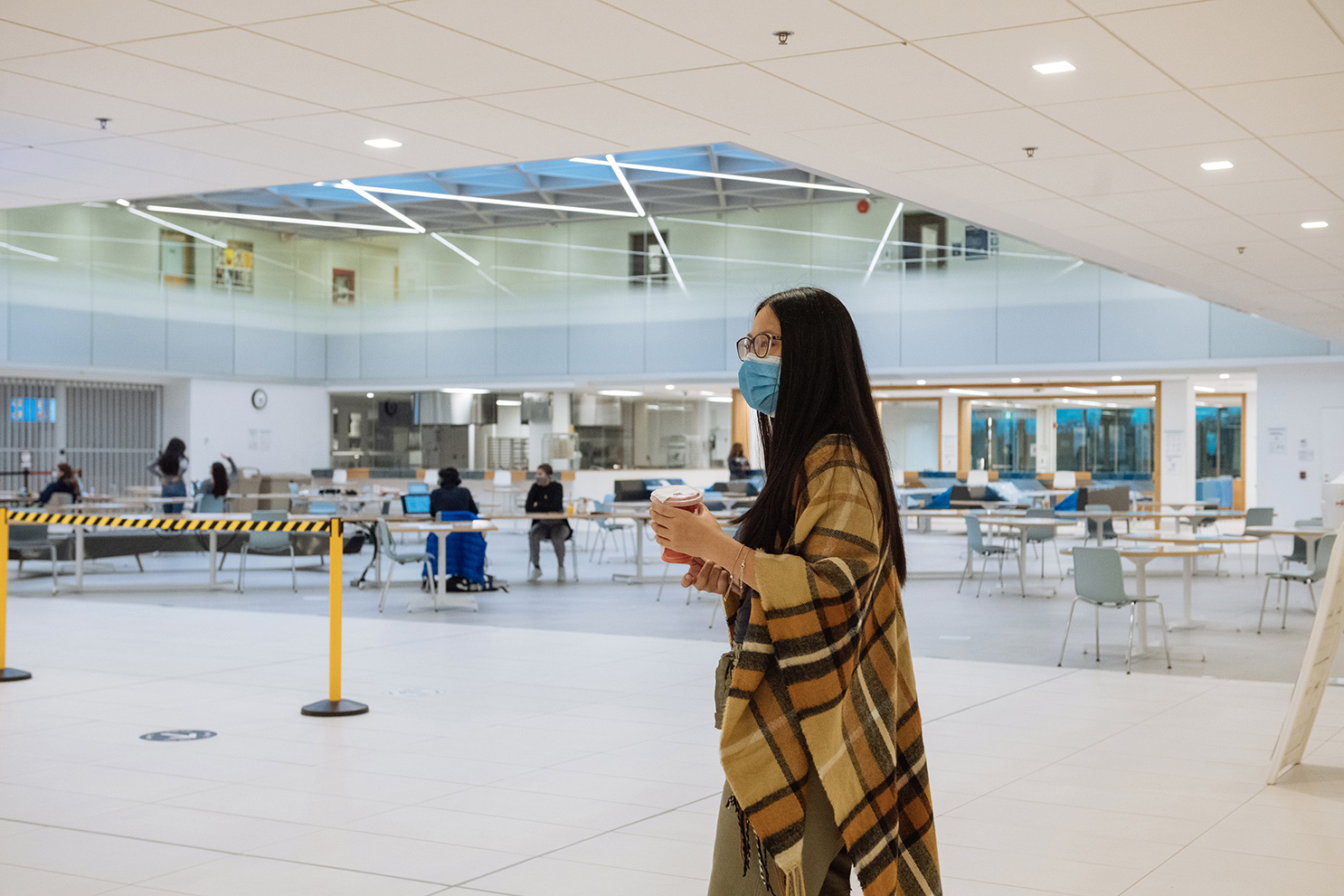
Liu and Waheed say they see the effort their professors are putting into creating community, but that there are limits to what they can do at a distance. “My professors are good about keeping up with discussion posts and being open to talking about things beyond the coursework at office hours,” says Liu. Waheed agrees but says there is no substitute for spontaneous after-class discussions with fellow students. He especially misses the camaraderie of informal study groups, which, he says, virtual discussions lack.
Looking ahead, McCahan says the university will continue to adapt as required, but the first steps have been promising. “We’ve discovered that our faculty members can innovate and adapt their teaching in the digital world, and that’s not going to evaporate post-pandemic. I think there will be a reimagining of undergraduate education. In-person teaching will still be critical, but we’ll closely examine where it has the most benefits, and where online teaching might enrich student learning, such as with global classrooms, where students and faculty collaborate with peers from other universities.”
About a year before the pandemic began, McCahan had a friendly debate with a colleague about the merits of virtual classrooms. “I argued that learning how to learn online was going to be a key skill in the future, and we needed to prepare our students,” she said. “I just didn’t realize the future was going to be 2020.”
Pandemic prep, by the numbers
- 800+ essential workers across the three campuses prepared the physical infrastructure for students’ gradual and safe return in September
- 30,000+ COVID-19 signs and decals installed
- 13.4 million wipes and 20,685 litres of hand sanitizer ordered
- Twice daily disinfection of high-touch points
- 100 electrostatic sprayers deployed for superior and faster disinfection
- 250,000 non-medical, reusable face masks procured for distribution – two for every student, staff and faculty member, and librarian
One Afternoon in November
On most days in a regular school year, U of T’s three campuses are bustling with activity. But as photographer Galit Rodan discovered during a recent visit to U of T Mississauga, there’s a sense of quiet absence now in the dining halls and corridors and student hangouts, as public health restrictions keep most members of the university community at home. “I thought how strange it must be for first-year students who don’t know what campus life is normally like,” says Rodan, who spent an afternoon with biology student Shirley Liu – and was impressed with her self-motivation. “I tried a distance-learning class once and never finished. I know how hard it is.”
